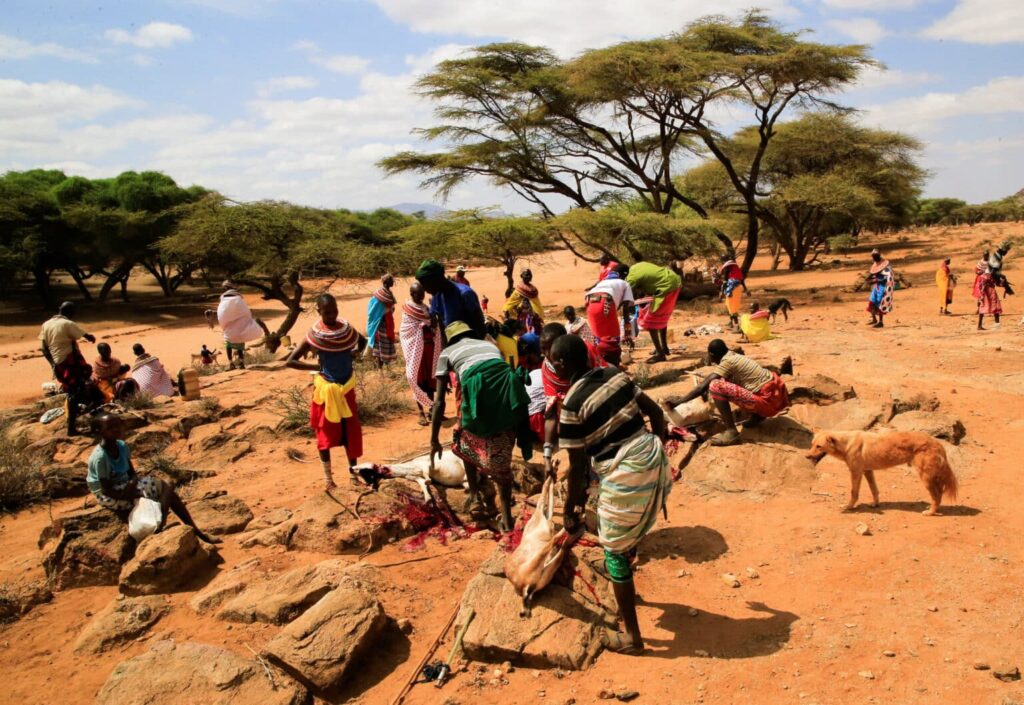Kenya’s Early Warning System Helps Drought-Weary Farmers Reap Rewards
In Kenya’s coastal Kilifi County, farmer Teresa Kahindi stands as a beacon of resilience amidst one of the most severe droughts in recent history. Two years ago, her ability to harvest nearly two tonnes of maize, while her neighbors struggled with empty fields, led to accusations of witchcraft. But Kahindi’s success was not supernatural; it was the result of a sophisticated early warning system designed to mitigate the impacts of severe weather.
Kenya’s advanced early warning system, developed and funded through a collaborative effort between the government, international agencies, and non-governmental organizations (NGOs), is a lifeline for farmers grappling with increasingly erratic weather patterns. The system leverages cutting-edge meteorological data, radio broadcasts, text alerts, and on-the-ground teams to provide timely information and actionable advice to communities facing the risk of droughts and floods.
In March 2022, a month before the rainy season was expected to begin, Kahindi participated in a seminar organized by county officials. The seminar provided her with crucial insights and recommendations on how to prepare for the upcoming season. Armed with this knowledge, she enhanced her soil with manure to improve water retention, applied dry grass mulching to reduce evaporation, and planted drought-resistant maize seeds that require less water and mature faster than traditional varieties.
“This knowledge has transformed our farming practices,” Kahindi asserts, emphasizing the pivotal role of climate forecasts in modern agriculture. Her proactive approach underscores the potential of early warning systems to revolutionize farming practices in regions prone to extreme weather conditions.
Kenya’s early warning system is part of a broader initiative to address global food security challenges exacerbated by climate change. The United Nations has set an ambitious goal to implement early warning systems worldwide by 2027, and Kenya is leading the charge in East Africa. The Early Warnings for All Action Plan, launched in Nairobi in 2023, aims to accelerate the deployment of such systems across the continent.
“In terms of early warning, Kenya stands out as a big brother for East Africa,” notes Zablon Shilenje, the World Meteorological Organization’s coordinator for Africa. The Kenyan model provides valuable insights into how early warning systems can be effectively integrated into agricultural practices to reduce the risk of famine.
The importance of early warning systems has been highlighted by recent events. Between 2020 and 2022, the Horn of Africa experienced its most severe drought in at least 70 years, worsened by the climate phenomenon La Niña. This crisis affected approximately 23 million people and required over $1.8 billion in humanitarian aid. Kenya’s early warning system has been instrumental in lessening the severity of these impacts, showing a marked improvement in food security compared to previous drought periods.
During the 2010-2011 drought, 2.8 million Kenyans faced severe hunger. However, with the advent of early warning systems, the number of people suffering during the 2016-2017 drought decreased significantly, even as the U.S. government reduced its food aid expenditures by half, according to a report by the U.S. Agency for International Development (USAID).
The origins of Kenya’s early warning system date back to 1985 with the establishment of the Famine Early Warning Systems Network (FEWS NET). Initially developed in response to a catastrophic famine in Ethiopia, FEWS NET now extends its services to over 50 countries. In Kenya, the system relies on high-resolution satellite imagery, crop data, and other climate indicators to forecast drought risks, sometimes up to eight months in advance.
Local authorities in Kenya are tasked with interpreting and disseminating these forecasts through various communication channels, including radio, television, SMS, and WhatsApp. Farmers also receive support in the form of subsidized fertilizers and seeds to help them prepare for adverse conditions.
Despite significant advances in data collection and predictive modeling, challenges remain. A study of FEWS NET data revealed that 92 percent of early warnings in Kenya were accurate, benefiting from improved monitoring of socioeconomic factors such as food prices and conflict. However, critics argue that timely and effective action is often hampered by insufficient financial support and a lack of prioritization from decision-makers.
James Odour, former director of Kenya’s National Drought Management Authority (NDMA), emphasizes that early warning systems are only as effective as the resources and actions that follow. “Unless the government and other stakeholders allocate the necessary resources, the system cannot function effectively,” he asserts.
In response to these challenges, the Kenyan government has mandated that counties allocate 2% of their annual budgets to early warning initiatives and has given local authorities responsibility for managing these funds. Despite this, some counties struggle with budget allocation and prioritization, leading to gaps in the system’s effectiveness.
Another pressing issue is reaching remote rural populations. In Kenya’s southern county of Kajiado, home to the pastoralist Maasai community, literacy rates and gaps in resource delivery can impede the understanding and implementation of drought warnings. Some Maasai, like Ole Mwato, have experienced severe losses due to past droughts and seek better training and resources to adapt to future challenges.
To address these gaps, FEWS NET is deploying 50 low-cost, 3D-printed automatic weather stations across Kenya, including three in Kilifi. These stations provide highly accurate meteorological data every 15 minutes, enhancing the system’s ability to predict and respond to weather events.
For now, Teresa Kahindi continues to lead by example, encouraging fellow farmers to adopt adaptive practices to maximize their yields and withstand future climate challenges. “We must work together to beat famine,” she urges, embodying the spirit of resilience that Kenya’s early warning system aims to foster.
Source: CNBC AFRICA



